As an Amazon Associate I earn from qualifying purchases. See my disclosure policy.
These homemade Protein Cookies are the perfect high protein snack. Soft, chewy, and ready in under 20 minutes, they make store-bought cookies a thing of the past. Plus, they’re gluten-free, low-carb, keto-friendly, and easily adaptable to a vegan diet.
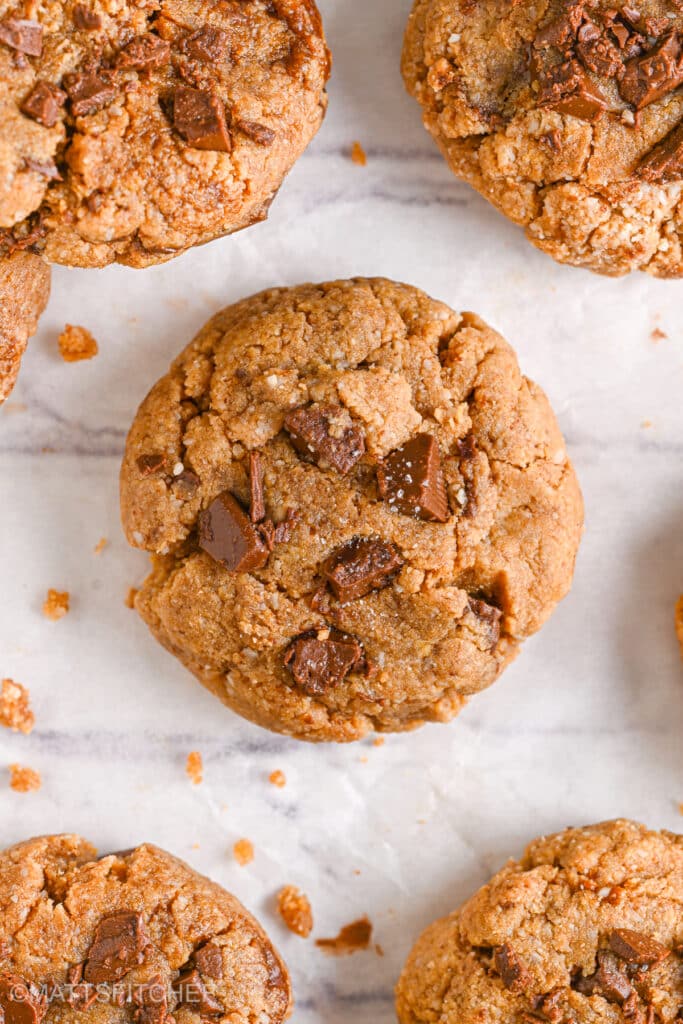
Hands up if you also love protein snacks. I’ll go first and rise both hands, because I’m a huge fan of macro-friendly bars and cookies. My favorite are Quest cookies & cream cookies, followed by Lenny and Larry (the famous “Complete Cookie”). But although delicious, I try to not consume too many because they’re loaded with nasties such as artificial sweeteners and sugars. Not to mention that they cost a fortune.
Tired of ending up with a bloated, hurting stomach and no money in the wallet, I developed my own protein cookies recipe. Just like my homemade protein bars, protein muffins, chocolate protein cake and protein cheesecake, they’re healthy and actually high in protein. Plus, they’re so easy to make and come in so handy for your post-workout snacks.
Ingredients
This recipe is pretty straightforward, it only calls for a couple of simple ingredients. Here’s all you need, along with more details and substitutes. The precise quantities can be found in the recipe card at the bottom.
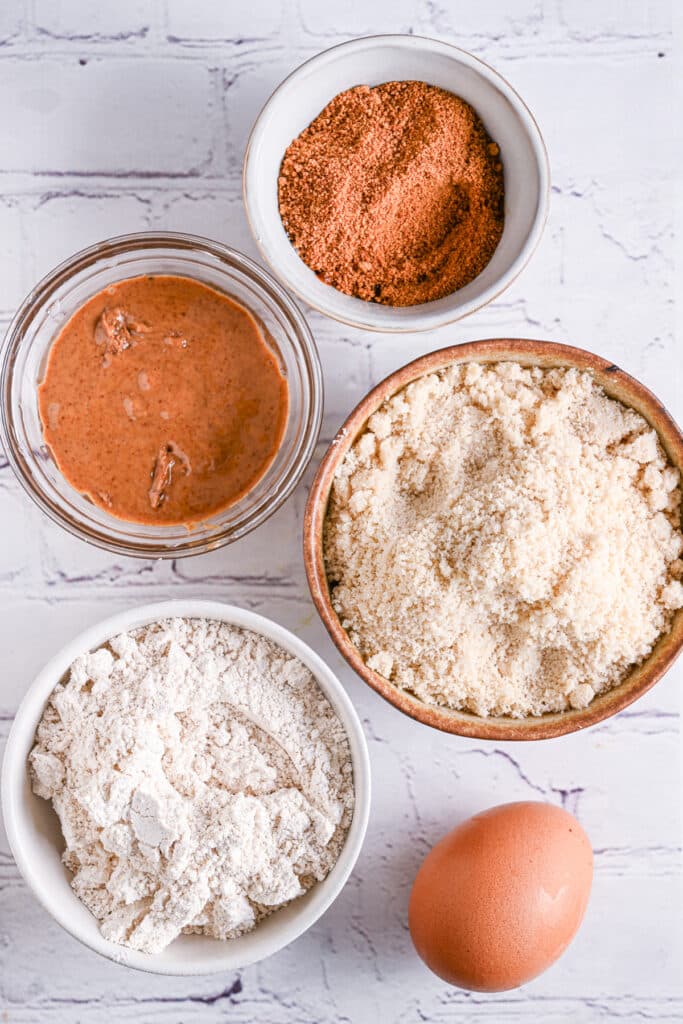
- Egg. One large egg binds the protein dough and adds a richer flavor. If making vegan protein cookies, swap it for a flaxseed egg or chia egg.
- Protein powder. For softer cookies, I recommend vegan protein powder or a mix of casein and whey. This recipe uses vanilla protein powder, but feel free to choose any other flavored or unflavored option you like.
- Almond flour. A gluten-free, low-carb alternative to traditional flour; it gives the cookies a soft, chewy texture. You can substitutes with oat flour, spelt flour or all-purpose flour. Coconut flour can also work, but reduce the amount as it absorbs more moisture.
- Granulated sweetener. I used a monk fruit erythritol blend, but also coconut sugar, brown sugar or your favorite granulated sweetener will work. Make sure to adjust the amount based on the protein powder you use, as some are already sweetened.
- Peanut butter. Adds moisture, flavor, and healthy fats. Opt for natural peanut butter with no added sugar (little salt is okay) or replace with almond butter, cashew butter, or sunflower seed butter.
- Baking powder. This helps the cookies rise and get softer.
- Vanilla extract. Adds flavor; you can omit if your protein powder has a vanilla flavor.
- Salt. A pinch of salt balances sweetness and enhance the flavors. Skip if using salted peanut butter.
How to make protein cookies
Here are the step-by-step directions along with pictures. If you are more visual, you can also watch the video recipe below.
- Get ready. Preheat the oven to 350°F (180°C) and line a baking sheet with parchment paper. Gather a bowl and all ingredients.
- Combine. In a large bowl, combine protein powder with almond flour, baking powder and salt. Add the egg, the nut butter and vanilla extract, if you are using unflavored protein powder.
- Mix. Using a fork or spatula, stir the dough until it’s smooth. If using, fold through the chocolate chips.
- Shape. Scoop out portions of dough and gently shape them into cookies; avoid flattening them too much for a softer texture. Place them on the prepared baking sheet, spacing them apart.
- Bake. Bake in hot oven for 8 to 12 minutes. Do not overbake or they will get dry; your protein cookies will firm up further as they cool.
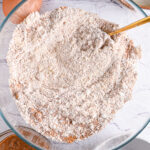

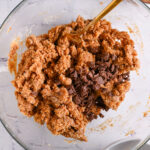

Watch the video recipe
Dietary adaptations
- Vegan. Swap the egg for one flaxseed egg or chia egg (I haven’t tried mashed banana yet) and use plant based protein powder – pea and soy are great choices.
- Keto. Provided that you use sugar-free sweeteners such as monk fruit or erythritol and almond flour, this recipe needs no change. For the lowest carb, opt for keto-friendly protein powder.
- Nut-free. Swap almond flour for oat flour and use sunflower seed butter or tahini as a replacement for peanut butter.
- Gluten-free. Double check that both almond flour and protein powder are certified gluten-free. Since these are flourless protein cookies, they normally contain no gluten.
- Low calorie. To cut calories, substitute almond flour with oat flour and use powdered peanut butter (such as PBFit or PB2) as a diet-friendly alternative to regular peanut butter.
Flavor variations
- Double chocolate. Add 1 tablespoon of cocoa powder to the dough and use chocolate protein powder. Of course, don’t forget the chocolate chips – I love my cookie loaded with extra dark chocolate chunks!
- Birthday cake. Use vanilla protein powder or stir in a teaspoon of vanilla extract and fold in sugar-free sprinkles. After baking, top with more sprinkles.
- Cookies and cream. Crush a few Oreos or sugar-free chocolate cookies and mix them into the dough. You can also use cookies and cream protein powder.
- Snickerdoodle. Mix in 1 teaspoon of cinnamon and roll the dough balls in a cinnamon-sweetener blend before baking.
- Frosted. Once the protein cookies have cooled, spread a thin layer of Greek yogurt or cream cheese on top. You can also sprinkle with chopped nuts or crushed Oreos for an extra crunch.
- Oatmeal. Substitute almond flour with rolled oats, then stir in some chopped walnuts and raisins if desired. Or try my oatmeal protein cookies, instead.
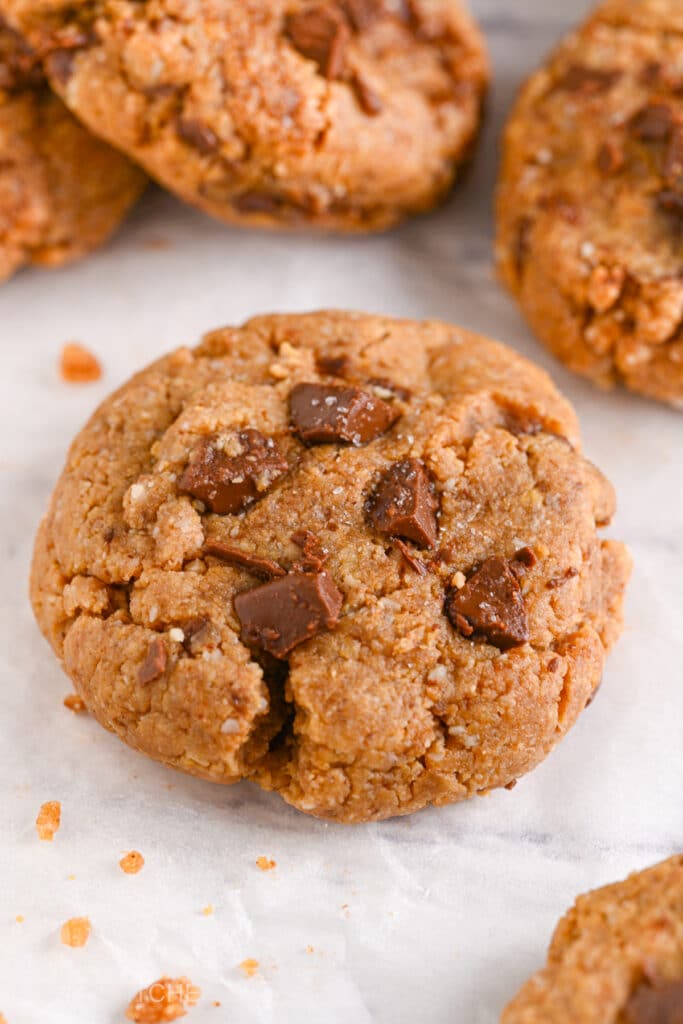
Recipe tips
- Use the right protein powder. Whey-casein blends or plant based options are recommended, as protein cookies with whey only can get quite dry. I used vanilla protein, but any flavor works as long as you like it.
- Add moisture if necessary. If the dough feels too dry, mix in a tablespoon of milk or applesauce to fix the consistency. This depends on the protein powder used, as some (like vegan protein powders) absorb more moisture.
- Don’t flatten the cookies too much. Keeping them thicker and a bit rounded makes them chewier and softer; it also prevents them from drying out.
- Don’t overbake. Cookies with protein powder may seem soft when removed from the oven, but they will firm up as they cool. If baked for too long they will get tough and dry.
Th best protein powder for cookies
There are different types of protein powder out there, and not all of them are great for baking. Pick the wrong one and you’ll end up with a bunch of dry protein cookies. In the next lines you’ll learn how different options can affect this recipe.
- Whey protein. This has the highest amount of protein, and can easily get dry once reheated. Additionally, it absorbs less moisture, so the dough may need some extra flour. Whey concentrate can be used, but avoid baking cookies with whey isolate.
- Casein protein. Casein absorbs more moisture, resulting in thicker, softer cookies. It’s recommended if you want a denser, cake-like texture.
- Plant-based protein. Tends to absorb more liquid, so it may require some extra milk or nut butter. As some have a strong flavor, be sure to use a product you like.
- Collagen. Collagen behaves similarly to whey but it does not give enough structure, which is why I don’t recommend it.
- Protein blends. Whey-casein blends or plant based blends are my favorite; they combine the best of all words in terms of both flavor and texture. For mine I used a vanilla whey-casein blend.
How to store and freeze
Store homemade protein cookies in an airtight container at room temperature for 2 days or refrigerate for up to 5 days. For a longer storage, let cool completely then pack in freezer-safe bags and freeze for up to 3 months. Thaw in the fridge overnight or re-warm in the microwave for 15-25 seconds before eating.
Frequently asked questions
The 3 most common reasons are overbaking, using only whey protein, or flattening them too much. Whey protein absorbs less moisture, which can make them drier. Also, remove them from the oven when they are just set, as they will continue to firm up while cooling.
Store-bought protein snacks are often loaded with sugars, artificial sweeteners and other nasties such as palm oil. For this reason, they’re not the healthiest option.
But with this recipe you can make healthy protein cookies at home. They’re high in protein, low in sugar, oil-free, dairy-free, flourless and gluten-free. Just be mindful about quantities.
As they are rich in protein and nutrients, these cookies are a great snack to build muscle. But remember that there’s no magic food to bulk, it all comes down to your daily caloric intake.
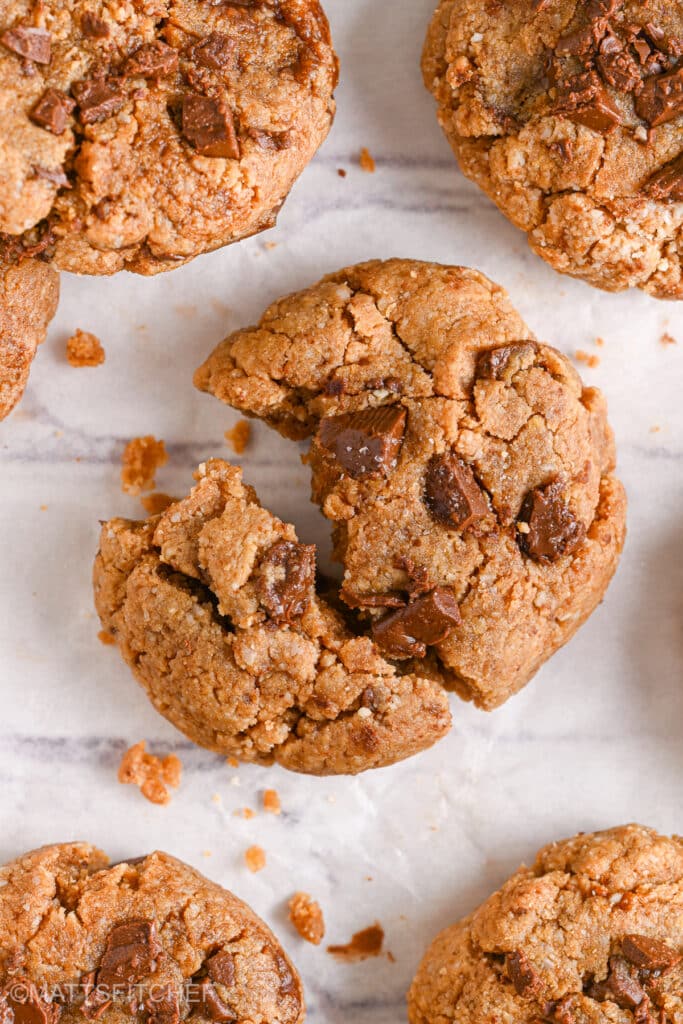
More protein snacks and desserts
- Protein muffins
- Protein cheesecake
- Homemade protein bars
- Protein granola bars
- Chocolate protein balls
- Single serving protein cookie
- Protein pudding

Protein Cookies
Ingredients
- 1 large egg, or flaxseed egg if vegan
- 1 cup (100 g) protein powder, vanilla recommended
- ⅓ cup (70 g) almond flour, or oat flour
- ⅓ cup (65 g) granulated sweetener, monk fruit, erythritol, coconut sugar or brown sugar
- ⅓ cup (80 g) peanut butter, or almond butter
- ½ tsp baking powder
- ⅙ tsp salt
- 1 tsp vanilla extract, optional if using unflavored protein powder
- ⅓ cup (50 g) chocolate chips, optional
Instructions
- Preheat the oven to 350°F (180°C) and line a baking sheet with parchment paper.
- In a large bowl, combine protein powder with almond flour, baking powder and salt. Add egg, nut butter and vanilla extract (if using unflavored protein powder).
- Using a fork or spatula, stir the protein dough until smooth.
- If using, fold through the chocolate chips.
- Scoop out portions of dough and gently shape them into cookies; avoid flattening them too much for a softer texture. Place them on the prepared baking sheet, spacing them apart.
- Bake in hot oven for 8 to 12 minutes. Do not overbake or they will get dry; your protein cookies will firm up further as they cool.
Video
Notes
- To store: Let cool, then place in an airtight container. At room temperature they will taste for 3 days, in the fridge they will last for up to 5 days.
- To freeze: Let cool, then pack in zipper bags and freeze for up to 3 months. Let thaw overnight in the fridge or microwave for 15-20 seconds before eating.
- Nutritional values are approximations. They are calculated for cookies made with calorie-free sweetener (monk fruit) and do not include the optional chocolate chips.
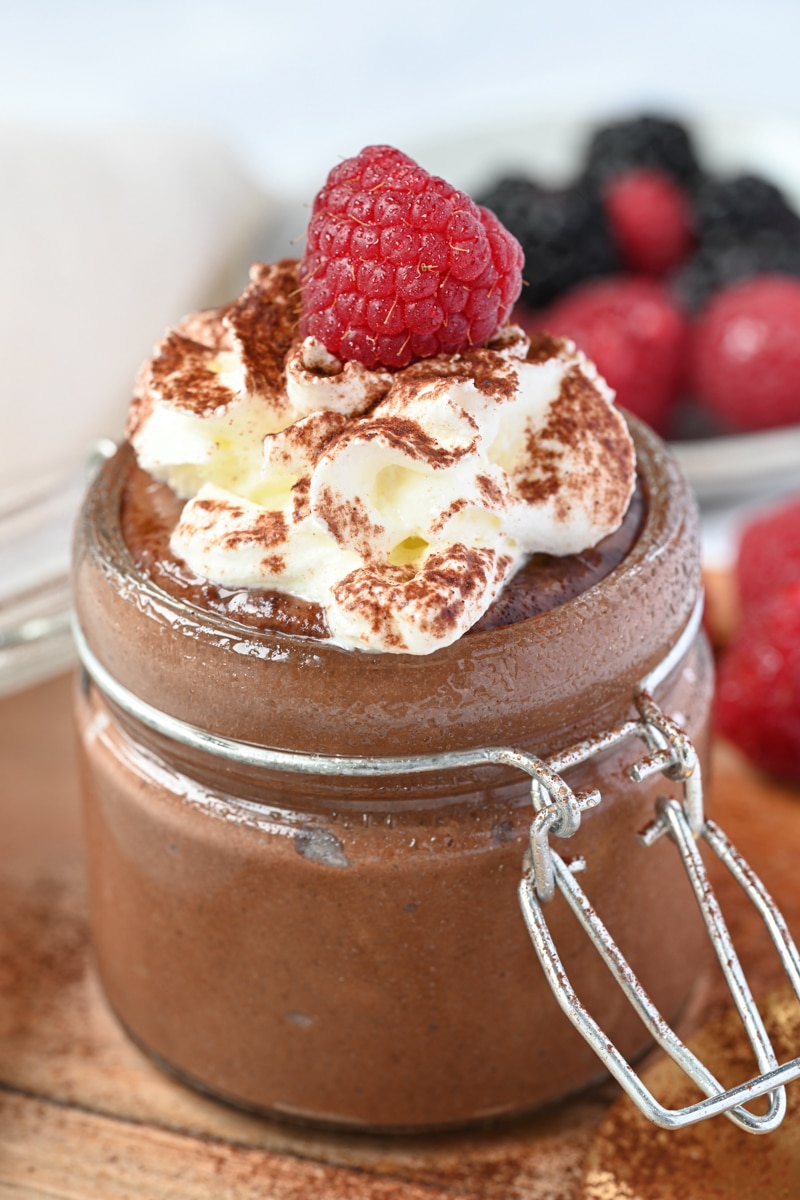
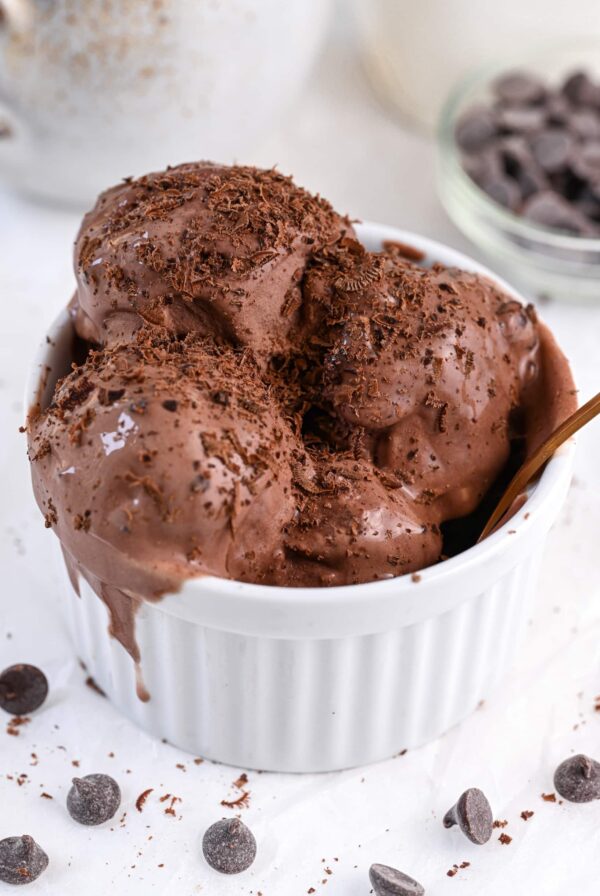
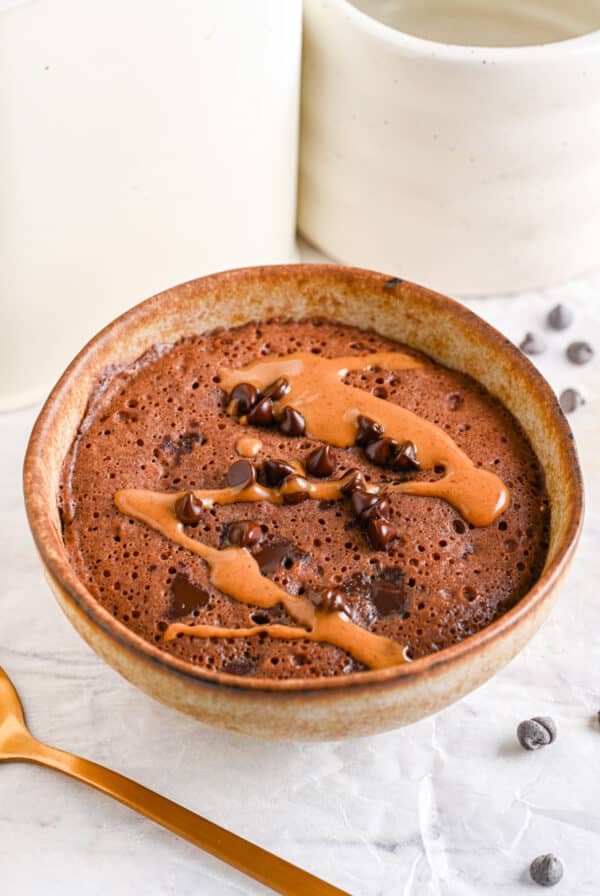
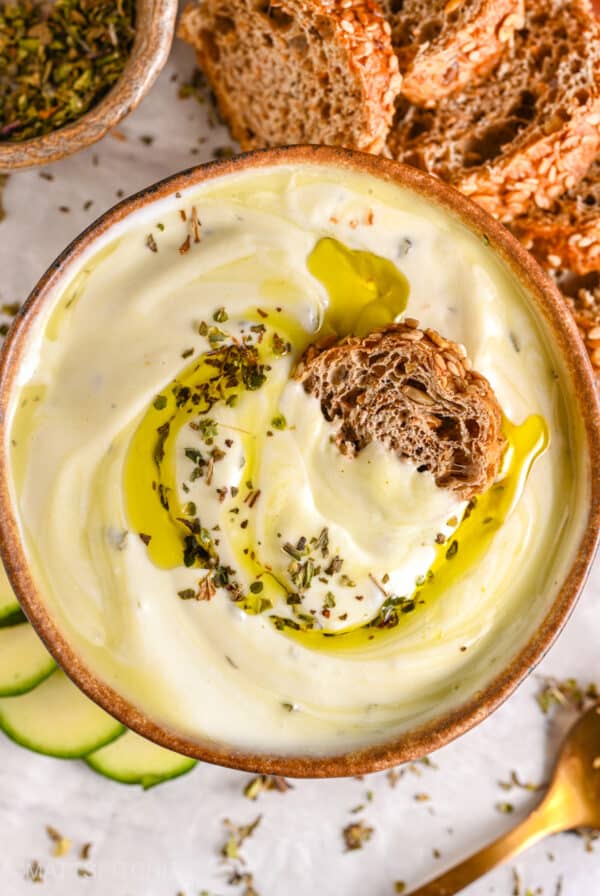
Very nice and easy, for me personally its hard to get it golden brown without drying the whole cookie, but besides that its very nice
Hey Benyamin,
thank you SO much!! I’m really happy you liked the protein cookies. To get that golden brown color without drying them out, try lowering the temperature a bit and avoiding overbaking—different protein powders and oven power can affect the baking time. Hope that helps! 😊
Have a fantastic day,
Matteo